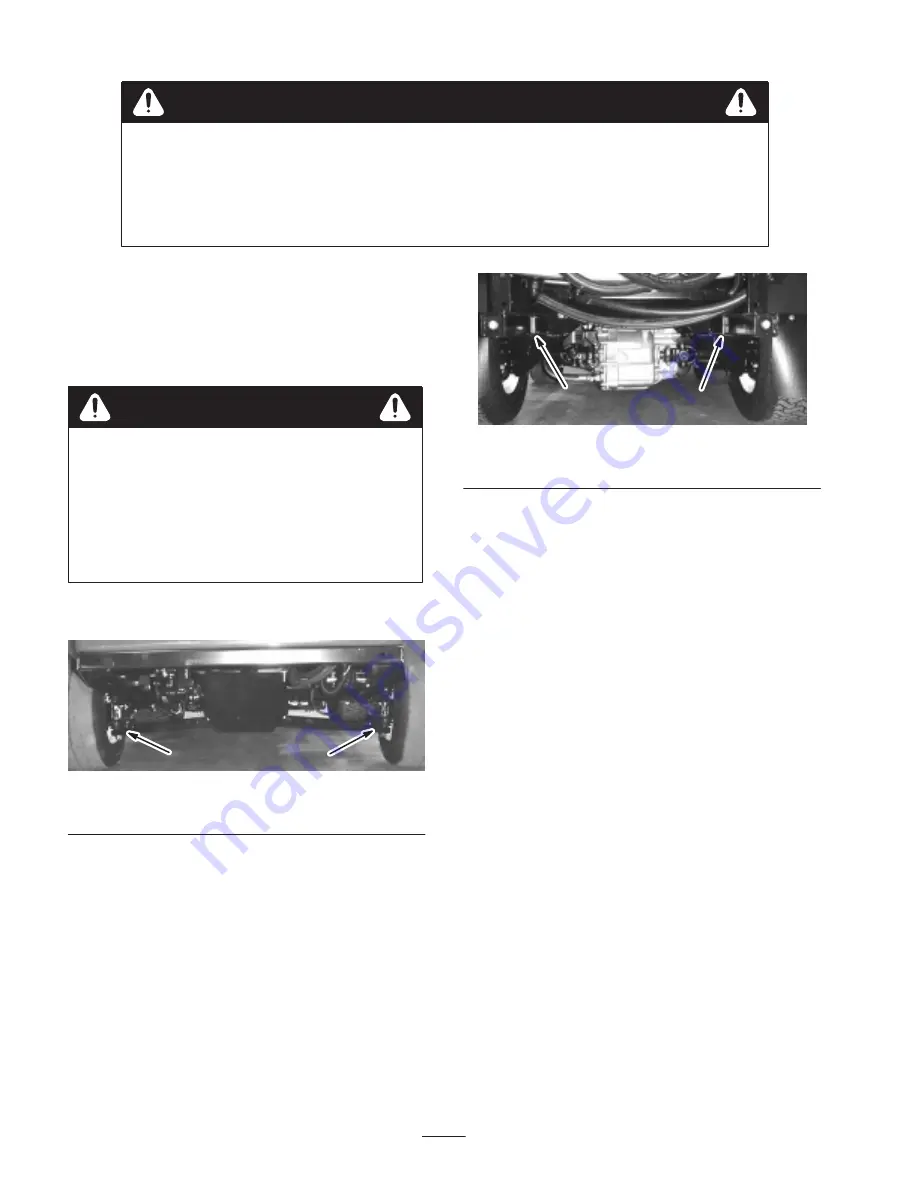
28
Caution
If you leave the key in the ignition switch, someone could accidently start the engine and
seriously injure you or other bystanders.
Remove the key from the ignition and disconnect the wire(s) from the spark plug(s) before you
do any maintenance. Set the wire(s) aside so that it does not accidentally contact the spark
plug(s).
Jacking the Sprayer
Whenever the engine is run for routine maintenance and/or
engine diagnostics, the rear wheels of the sprayer should be
1 inch (25 mm) off of the ground with the rear axle
supported on jack stands.
Danger
A sprayer on a jack may be unstable and slip off of
the jack, injuring anyone beneath it.
•
Do not start the engine while the sprayer is on a
jack.
•
Always remove the key from the ignition before
getting off of the sprayer.
•
Block the tires when the sprayer is on a jack.
The jacking point at the front of the sprayer is under the
A-arms (Fig. 27)
1
1
Figure 27
1.
Front jacking points
The jacking point at the rear of the sprayer is on the rear
frame support, between the angle welds (Fig. 28).
1
1
Figure 28
1.
Rear jacking points
Inspecting the Wheels/Tires
Check the wheels to ensure that they are mounted securely
after the first 8 operating hours and then every 100 hours
thereafter. Torque the front bolts to 50–55 ft-lb
(68–74 N
⋅
m) and the rear lug nuts to 40–60 ft-lb
(54–81 N
⋅
m).
Check the tire condition at least every 100 hours of
operation. Operating accidents, such as hitting curbs, can
damage a tire or rim and also disrupt wheel alignment, so
inspect tire condition after an accident.
Servicing the Air Cleaner
Foam Element: Clean and oil after every 25 operating
hours, or yearly, whichever occurs first.
Paper Element: Replace after every 100 operating hours
or yearly, whichever occurs first.
Note: Service the air cleaner more frequently (every few
hours) if operating conditions are extremely dusty or sandy.
















































